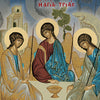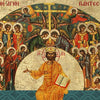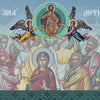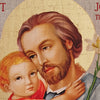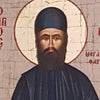The Feast of Epiphany celebrates the new beginning of mankind

Epiphany is one of the Twelve Great Feasts of the liturgical Christian year, together with Christmas, Easter, the Annunciation, the Presentation of Jesus at the Temple, the Holy Transfiguration, the Entry into Jerusalem (Palm Sunday), the Raising of Lazarus, the Ascension of Christ, the Dormition of Theotokos and the Pentecost. Epiphany, also called Theophany (meaning manifestation of God), is celebrated on 6th January and commemorates the baptism of Jesus Christ by St John the Forerunner, son of Zacharias and Elizabeth, at river Jordan. Regardless of the historical events, the importance of the feast can be found in its name, as during that day all three Persons of the Holy Trinity—Father, Son, and Holy Spirit—were made manifest.
As mentioned in the feast’s apolytikion, Christ came to shed light upon the world and to sanctify the world through his baptism. Theophany is the day we celebrate the names of Fotini, Fotios, Ourania, Jordan, Theophanis and Theocharis.
Historical facts regarding the Feast
Upon turning 30 and before commencing His social life, Jesus went to river Jordan to find John the Baptist, Jon was his older cousin by 6 months and was an ascetic in the wilderness. He was preaching the word of God and calling people to repentance. Jesus asked John to be baptized by him.
The moment Jesus rose from the water, the Heavens opened, the Holy Spirit in the form of a dove descended upon Christ, and the voice of the Father was heard saying: This is the beloved Son of God, with whom God will save the man. This is written by three of the four Evangelists, Mark, Mathew and Luke.
Theophany tradition
On the eve of the feast of the Epiphany, parish priests visit households to sanctify and bless the faithful with the Holy Water and Cross. According to folklore tradition, it was believed that this was a way to drive goblins away, who were scared by the priest.
The two most important services that take place on the day of the Great feast of the Epiphany is The Great Sanctification of the water that takes place at the end of the Divine Liturgy, and the immersion of the Holy Cross in the water that follows.
The immersion of the Holy Cross in the water that commemorates the Baptism of Christ, is usually conducted near open bodies of water, for example in the sea, in river banks, or, in case there is no immediate access to water, in cisterns (as happens, for example, in the city of Athens). Tradition has it that when the Holy Cross is tossed in the water, where possible, young men dive in the icy waters to fetch the Cross, to be blessed by the priest and receive honours and wishes from the gathered crowd.
In Athens, as established in 1900, the official ceremonial service of the immersion of the Holy Cross takes place opposite the royal pier, or near the old city hall, or nowadays in front of St Spyridon church. Similar services take place throughout Greece.
In the Orthodox tradition, the Sanctification of the water has the meaning of purification. People, the waters, as well as the whole nature are purified and protected against the influence of demons. The Orthodox Church teaches that holy water differs from ordinary water by virtue of the incorruptibility bestowed upon it by the blessing that transforms its very nature.
The apolytikion of the feast of the Epiphany
As You were baptized in the Jordan, O Lord, then the worship of the Trinity became manifest, for the voice of the Father bore witness to You, naming You the Beloved Son; and the Spirit, in the form of a dove, confirmed the certainty of the word. O Christ God, who appeared and illumined the world, glory to You.
The Symbolism
The Feast of Epiphany celebrates the new beginning of mankind that is being marked by the Christian baptism, a victory of light over darkness.
The feast of Theophany initiates the faithfull to salvation and holds a very special place in the life of Orthodox Christians. A good example of this is the fact that
Great Holy Water (the Holy Water given to the faithful on the day of the Theophany) is preserved in the households for the faithful to drink in case of sickness of the body or soul. The tradition is to to drink three small sips of Holy water.
Epiphany Icons and Crosses
The symbolism of the Theophany icon is deep and rich. Jesus Christ is depicted standing with rocky wilderness on either side. The river, not sanctified yet, bring to mind images of the Cataclysm of the Old Testament. The rocky wilderness brings to mind the icons of the Nativity and the Ressurection of Christ. In the icon Jesus is not submerged in the water, for creation was baptized in Him, not vice versa.

